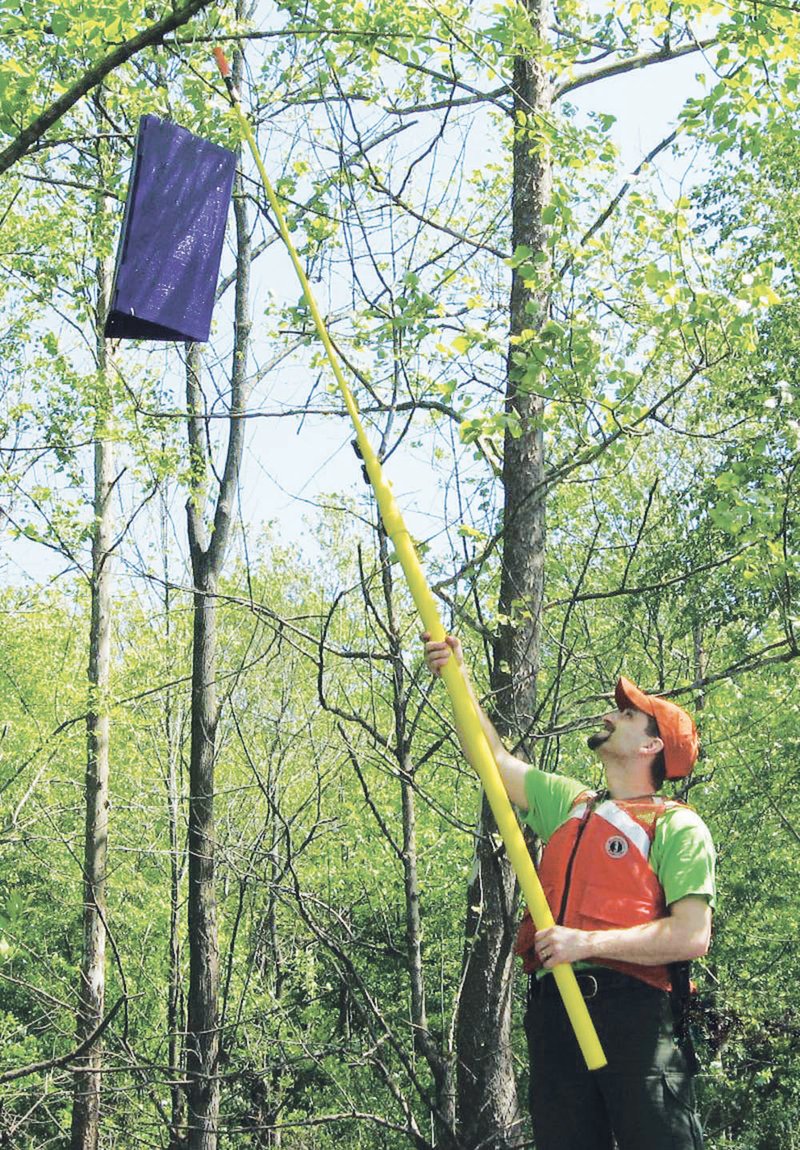Arkansas forestry experts said an Asian beetle, the killer of tens of millions of ash trees in 24 Northern and Midwestern states and in Canada, have been found in four counties in the state, including Hot Spring and Clark counties in the Tri-Lakes Edition coverage area.
“Emerald ash borers have been detected in traps placed in Hot Spring, Clark and Nevada counties,” Scott Bray, director of the Arkansas Plant Board, announced on July 18. “The insect specimens from the Hot Spring and Clark county traps were sent to scientists at the U.S. Department of Agriculture Animal and Plant Health Inspection Service’s Plant Protection and Quarantine, who confirmed the insect’s identity.”
Since the first announcement from Bray, the beetle has also been found in Columbia County, along the border of Louisiana.
The extent of the infection is not yet known, but the predictions are not good, said Jon Barry, an assistant professor of forestry with the University of Arkansas Cooperative Extension Service.
“Right now, we don’t have a good handle on the spread of the infestation,” said Barry, who is stationed at the Southwest Research and Extension Center in Hope. “It takes two to three years or more for the beetle to kill an ash tree. We will not see a major impact tomorrow, but up north where the EAB was first detected, they have around 1 percent of the ash trees they used to have.”
Barry said the insect impact on ash trees in Arkansas could be as damaging as the elm bark beetle that spread Dutch elm disease, killing almost all the elm trees in the United States and up to 75 percent of Canadian elms.
“We’re still trying to wrap our mind around it,” Barry said.
Ash, with a scientific name of Fraxinus americana, is a hardwood harvested in Arkansas and best known as the wood used in the production of baseball bats. It is also used for flooring, millwork pieces, boxes and crates, and turned objects such as tool handles. According to the Wood Database, a private information source created in 2007, ash is considered among the least-expensive utility hardwoods available domestically and is a sustainable wood product.
The insect was first discovered in Michigan in 2002 and is thought to have entered the United States hidden in wood packing materials from Asia.
“The adult emerald ash borer is a metallic-green insect about one-half inch long and one-eighth inch wide, making it hard to detect in the wild,” Bray’s announcement states. “The female beetles lay eggs on the bark of the ash tree. The eggs hatch, and the larvae bore into the bark. They feed and develop, cutting off the flow of nutrients and eventually killing the tree.”
The ash trees die beginning in the top. Other signs of an infested tree include sprouts growing from the roots of the tree and D-shaped holes in the bark where the insect exits.
Since the beetles were first discovered in the North and first spread from Michigan to Canada, Barry said it surprised many foresters and entomologists that the beetles were found in Arkansas.
“We just didn’t know how it came to south Arkansas, but once we thought of it, I should have realized it sooner,” he said. “I have lived in south Arkansas all my life, and I remember what I saw the day before deer season — one camper-trailer after another of out-of-state hunters coming in, many of them carrying what they needed in the woods, including firewood.
Barry said the extension service has been encouraging the U.S. Army Corps of Engineers in the state and Arkansas State Park officials to check with visitors and talk to them about bringing in firewood.
“I am sure we are seeing Arkansans who have moved to Illinois or elsewhere come home to hunt, and without knowing, they are bringing in infested wood,” he said.
Bray, a member of the state plant board, also urged residents to use locally sourced firewood when burning it at home.
“When traveling, burn firewood where you buy it,” he said in the announcement. “Make sure to burn all wood purchased.”
State plant board officials announced that state and federal personnel will be surveying trees in the areas surrounding the initial EAB finds to determine the spread of the infestation.
The USDA has issued federal quarantines covering all of nine states from New Jersey to Missouri and Iowa, as well as in individual counties in 11 other states from New Hampshire to Colorado.
It is expected that a federal quarantine will be expanded to include parts of Arkansas and potentially the entire state, according to the plant board announcement.
“Arkansas has always been The Natural State,” Barry said, “and we encourage people to share it with us, but we might be losing a piece of it.”
Staff writer Wayne Bryan can be reached at (501) 244-4460 or at wbryan@arkansasonline.com.
